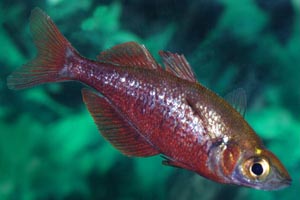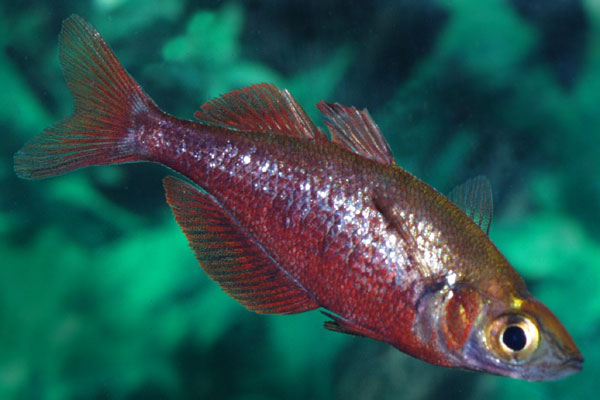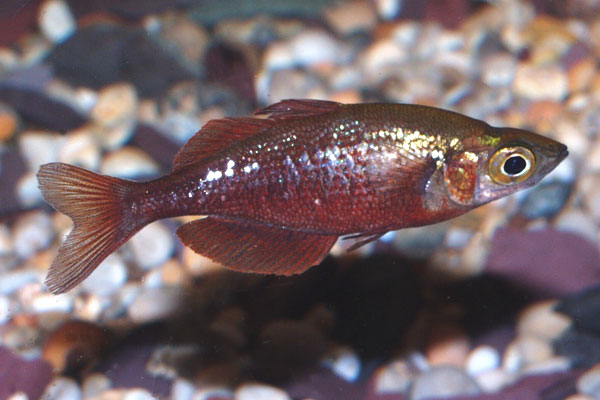

Species Profile | Images | Breeding Report | Similar Species

(Other members of the genus Glossolepis)
ADULT SIZE: 14 cm
WATER CONDITIONS: Moderately hard and alkaline
TEMPERATURE RANGE: 22-24 C
FOOD: Feed Glossolepis incisus live and dried foods. Live foods, especially freshwater crustaceans, happily taken.
DISTRIBUTION: This species comes from New Guinea
SEXUAL DIFFERENCES: Males have extreme salmon-like coloration, whilst females are a striking gold. Older males develop a high arched back.
AQUARIUM CARE: A stunning rainbow from Lake Sentani in New Guinea. Also an old aquarium favourite. Best kept in a larger (at least 48") tank, with planted areas, but also open regions for swimming. This shoaling species should be kept in a group of at least 6-8 individuals.
A good species to be kept with other similar sized shoalers: rainbowfish, charcins and danios. Also works well in a Lake Tanganyika cichlid aquarium.
BREEDING: Breeding is best acheived with spawning mops. The fry hatch after a week or so, and can eat newly hatched artemia nauplii
Have you bred Glossolepis incisus ? Why not fill in a breeding questionaire?, or examine existing Glossolepis incisus breeding reports
Other members of the genus Glossolepis
Other rainbowfish species
Other species from New Guinea

A young male - with salmon red coloration, but without the arched back of older fish

Rainbowfish like moderately hard alkaline water
BREEDING: Breeding is best acheived with spawning mops. The fry hatch after a week or so, and can eat newly hatched artemia nauplii
Have you bred Glossolepis incisus ? Why not fill in a breeding questionaire?
Sorry no records.